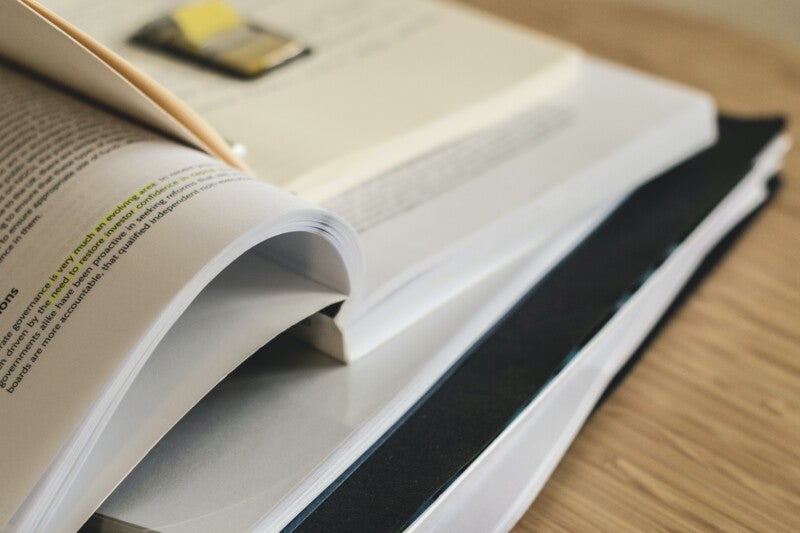A thesis is a work of research required for obtaining a bachelor’s or master’s degree. The recommended volume of the document is 40-60 pages (bachelor’s thesis), or 60-100 pages (master’s thesis), excluding attachments.
How to start writing a thesis
There are 10 basic steps required for writing a thesis. 1. Choose a supervisor. The required specialist can be selected independently, or you can wait for an official appointment from the thesis council. Features the supervisor should have: attentiveness to you and the scientific developments, responsibility when making important decisions, exactness to the correct format of writing a thesis, interest in achieving a good result, and the presence of published works (monographs) directly related to the topic you chose.
1. Choose a supervisor. The required specialist can be selected independently, or you can wait for an official appointment from the thesis council. Features the supervisor should have: attentiveness to you and the scientific developments, responsibility when making important decisions, exactness to the correct format of writing a thesis, interest in achieving a good result, and the presence of published works (monographs) directly related to the topic you chose.
If the supervisor insists on the choice of a research topic that is not of your preferences, or if he or she does not directly participate in the process of writing the thesis, such a specialist should be replaced.
2. Select a thesis council. The thesis council is a specialized body established on the basis of a university or scientific community. Its main tasks are the consideration of bachelors’ or masters’ works submitted for the defense procedure and the approval of the desired scientific degree.
3. Receive funding for the work. Before starting work on a thesis, you should try to find sources of funding. The main reasons for receiving additional funds:
carrying out the necessary research;
purchase of rare information sources;
payment for materials for conducting experiments on the topic of a thesis.
4. Define the object/subject of research. The object is a part of the scientific industry with little-studied processes and phenomena that play a large role in the development of modern society. If you already see at this stage that working on a thesis is too difficult for you, then you should consider getting help. Services like BuyEssay, where you can buy essay writing for cheap, offer assistance not only with essays but also with complex papers such as theses.
5.Identify relevance. After choosing an object/subject, you should reasonably consider the relevance of the issues raised. For this, the timeliness of future experiments is assessed, as well as the need to find solutions to existing problems.
6. Choose a topic for the paper. Choosing the topic of a thesis depends on the consideration of the basic properties of the subject of research, as well as confirmation of the relevance of the future paper. The correct wording of the object/subject will make it easier to find the required name.
7. Form a working hypothesis, goals, and objectives. Formation of a working hypothesis and its validity allow the author to forecast the expected results from the future research. The results obtained are confirmed or refuted in the process of defending the thesis.
8. Analyze the selected information sources. For an objective, consistent reflection of the material, the works of other authors are analyzed that fully correspond to the topic of the thesis. The main task is to determine the list of under-researched issues in the selected industry.
9. Choose a methodology for the paper. Methodology, as a set of appropriate methods, is necessary to achieve the desired results in the research process. There are two main categories of methods:
special;
general scientific (experimental, theoretical).
The main structural units of a thesis
Any scientific paper consists of the introduction, the main body, conclusion, a full list of sources used, and applications. 1. Introduction. In this part of the paper, the author reasonably justifies his or her own choice of the topic, focuses on the innovation of the experiments carried out, as well as the theoretical and practical value of the thesis.
1. Introduction. In this part of the paper, the author reasonably justifies his or her own choice of the topic, focuses on the innovation of the experiments carried out, as well as the theoretical and practical value of the thesis.
2. First chapter. Your task is to compile a literary review of information found in sources on the topic of the paper. At the end of the chapter, working hypotheses, the objectives, and goals of the study are presented.
3. Second chapter. This part of the thesis contains a description of the method of your work (presentation of the essence of the experiment, its full description, a list of the equipment used, etc.). Your goal is to compose the paper so the reader has no questions about your research when reading it.
4. Third chapter. Here the author displays the results of the research in a visual form (tables, illustrations, and graphs with a detailed description of each experiment). Split the chapter into several paragraphs or add an additional, fourth chapter (relevant for technical theses).
5. Conclusions. In some papers, it is better to include several conclusions for each problem presented in the thesis.
6. List of sources used. Indicate in alphabetical order the works used in the preparation of the thesis.
7. Applications. They are an optional part of the thesis, and they consist of data that are not included in the main body of the text of the paper.
For many people, writing a thesis is stressful enough. You need to conduct thorough research, communicate with a supervisor – your nerves and abilities are pushed to the limit. However, if you follow this guide, you will see that thesis writing is not that scary. Good luck!

















